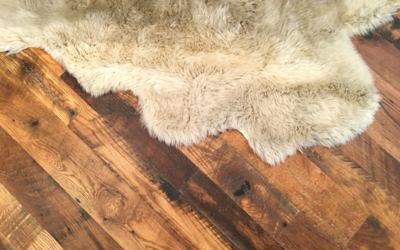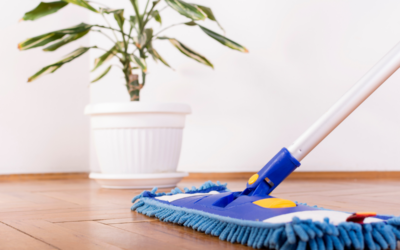Transform Your Home with Stunning Stained Wood Floors: A Comprehensive Guide
Stained wood floors have a timeless elegance that can enhance the beauty of any space. Whether you prefer a classic, rustic, or modern look, stained wood floors can be a versatile choice that complements any interior design style. The allure of stained wood floors lies in their natural beauty and warmth, as well as their ability to add depth and character to a room.
Wood flooring has been a popular choice for centuries due to its durability and aesthetic appeal. Stained wood floors take this classic flooring option to the next level by adding color and enhancing the natural grain of the wood. The result is a floor that provides a functional surface and becomes a focal point in the room.
The versatility of stained wood floors is another reason why they are so popular in interior design. With a wide range of wood species, colors, and finishes to choose from, you can create a customized look that suits your personal style and complements the overall design of your home.
Key Takeaways
- Stained wood floors add beauty and warmth to any home interior.
- Deciding the right wood species is crucial for achieving the desired stain color and durability.
- Proper preparation of the floors through sanding, cleaning, and repairing is essential for a flawless finish.
- Oil-based stains offer deeper and richer colors, while water-based stains are more eco-friendly and easier to clean up.
- From natural to vibrant hues, there are endless color options to decide from for stained wood floors.
Choosing the Right Wood Species for Your Stained Floors
When it comes to staining wood floors, the choice of wood species is crucial. Different species have different characteristics that can affect how well they take on stain and how the final result looks.
Some popular wood species for staining include oak, maple, cherry, and walnut. Oak is known for its strong grain pattern and durability, making it an excellent choice for staining. Maple has a more subtle grain pattern and is often chosen for its light color, which allows stains to show more vibrantly. Cherry has a rich, reddish-brown color that can be enhanced with stain, while walnut has a deep, dark brown color that can create a dramatic effect when stained.
The grain pattern of the wood also plays a role in how well it takes on stain. Woods with open grain patterns, such as oak and ash, tend to absorb stain more evenly and deeply, resulting in a more pronounced color. Woods with closed grain patterns, such as maple and cherry, may require additional steps, such as sanding or conditioning, to ensure an even and consistent stain application.
Preparing Your Floors for Staining: Sanding, Cleaning, and Repairing
Proper floor preparation is essential for achieving a beautiful and long-lasting stained wood floor. Before applying any stain, the floors need to be sanded, cleaned, and repaired to ensure a smooth and even surface.
The first step in floor preparation is sanding. This involves using a floor sander to remove any existing finish or imperfections on the surface of the wood. Sanding not only creates a smooth surface for the stain to adhere to, but also opens up the pores of the wood, allowing for better absorption of the stain.
After sanding, it is important to thoroughly clean the floors to remove any dust or debris. This can be done using a vacuum cleaner or a damp mop. It is crucial to ensure that the floors are completely dry before proceeding with staining.
If there are any damaged or uneven areas on the floors, they should be repaired before staining. This may involve filling in gaps or cracks with wood filler and sanding them down to create a seamless surface.
Staining Techniques: Oil-Based vs. Water-Based Stains
| Staining Techniques | Oil-Based Stains | Water-Based Stains |
|---|---|---|
| Application Time | Longer | Shorter |
| Drying Time | Longer | Shorter |
| Odor | Strong | Mild |
| Clean Up | Mineral Spirits | Water |
| Environmental Impact | Higher | Lower |
When it comes to staining wood floors, there are two main techniques: oil-based stains and water-based stains. Each technique has its advantages and disadvantages, so it is essential to consider your specific needs and preferences before choosing one.
Oil-based stains are known for their rich color and ability to penetrate deep into the wood. They provide a more traditional look and tend to enhance the natural beauty of the wood grain. Oil-based stains also tend to be more durable and longer-lasting than water-based stains.
However, oil-based stains have a longer drying time and can emit strong fumes during application. They also require the use of solvents for cleanup, which can be messy and time-consuming.
On the other hand, water-based stains are known for their quick drying time and low odor. They are also easier to clean up, as they can be washed away with water. Water-based stains are available in a wide range of colors and can be easily mixed to create custom shades.
However, water-based stains may not penetrate as deeply into the wood as oil-based stains, resulting in a less pronounced color. They also tend to raise the grain of the wood, requiring additional sanding between coats.
Color Options: From Natural to Vibrant Hues
One of the most exciting aspects of staining wood floors is the wide range of color options available. From natural wood tones to vibrant hues, there is a color to suit every style and preference.
Natural wood tones, such as honey, amber, and chestnut, are popular choices for those who want to enhance the natural beauty of the wood. These colors provide a warm and inviting look that can complement various interior design styles.
For those who prefer a more dramatic look, darker stains like espresso or ebony can create a bold statement. These colors can add depth and richness to a room, especially when paired with lighter furniture and decor.
If you’re feeling adventurous, you can also experiment with vibrant hues like red, blue, or green. These colors can add a pop of color and create a unique and eye-catching look. However, it is important to consider the overall design of the room and ensure that the color of the stained floors complements the other elements in the space.
Protecting Your Stained Floors: Sealers, Polyurethane, and Wax
Once your wood floors are stained, it is essential to protect them from everyday wear and tear. This can be done using sealers, polyurethane, or wax, depending on your specific needs and preferences.
Sealers are typically applied before staining to prevent the wood from absorbing too much stain and to ensure an even and consistent color. They create a barrier between the wood and the stain, allowing for better control over the final result. Sealers also help to protect the wood from moisture and stains.
Polyurethane is a popular choice for protecting stained wood floors. It forms a durable and long-lasting finish that is resistant to scratches, stains, and water damage. Polyurethane is available in different sheens, from matte to high gloss, allowing you to choose the level of shine that suits your preference.
Wax is another option for protecting stained wood floors. It creates a soft and natural-looking finish that enhances the beauty of the wood. Wax is easy to apply and can be buffed to a high shine. However, it requires regular maintenance and may need to be reapplied more frequently than polyurethane.
Maintenance Tips: Cleaning and Refinishing
Regular maintenance is essential for keeping your stained wood floors looking their best. This includes cleaning and refinishing as needed.
To clean stained wood floors, it is important to use a gentle cleaner that is specifically designed for wood surfaces. Avoid using harsh chemicals or abrasive cleaners, as they can damage the finish of the floors. Instead, opt for a pH-neutral cleaner that will effectively remove dirt and grime without stripping away the protective layer.
It is also essential to avoid excessive moisture when cleaning stained wood floors. Use a damp mop or cloth rather than soaking the floors with water. Excess moisture can cause the wood to warp or swell, leading to damage.
Over time, the finish on stained wood floors may become worn or scratched. When this happens, it may be necessary to refinish the floors to restore their beauty and protect them from further damage. Refinishing involves sanding down the existing finish, applying a new coat of stain if desired, and then applying a protective finish.
The frequency of maintenance required for stained wood floors will depend on the amount of foot traffic and wear and tear they receive. High-traffic areas may need to be cleaned and refinished more frequently than low-traffic areas. It is essential to monitor the condition of your floors and address any issues as soon as possible to prevent further damage.
Stained Wood Floors and Interior Design: Matching Styles and Colors
Stained wood floors can have a significant impact on the overall look and feel of a room. When choosing furniture and decor to complement your stained wood floors, it is important to consider factors such as style, color, and texture.
The style of your stained wood floors should harmonize with the overall design of the room. For example, if you have a traditional or rustic style, you may want to decide on furniture and decor that has a similar aesthetic. On the other hand, if you have a modern or contemporary style, you may want to opt for sleek and minimalist pieces.
Color is another essential consideration when matching furniture and decor with stained wood floors. If you have light-colored floors, you may want to select furniture and decor in complementary shades, such as whites, creams, or pastels. If you have dark-colored floors, you may want to select furniture and decor in contrasting shades, such as whites, grays, or bold colors.
Texture can also play a role in creating a cohesive look. For example, if you have smooth and glossy stained wood floors, you may want to choose furniture and decor with textured fabrics or materials to add visual interest. If you have rough or distressed stained wood floors, you may want to pick furniture and decor with a similar texture for a cohesive look.
DIY vs. Professional Installation: Pros and Cons
When it comes to installing stained wood floors, you have the option to do it yourself or hire a professional. Both options have their advantages and disadvantages, so it is important to consider your skills, time, and budget before deciding.
DIY installation can be a cost-effective option, as you can save on labor costs. It also allows you to have full control over the process and customize the installation to your specific needs and preferences. However, DIY installation requires a certain level of skill and knowledge, as well as access to the necessary tools and materials. It can also be time-consuming and may result in mistakes or uneven results if not done correctly.
Professional installation, on the other hand, ensures a high-quality and professional finish. Professionals have the skills, experience, and tools needed to install stained wood floors efficiently and accurately. They can also provide valuable advice and guidance throughout the process. However, professional installation can be pricier than DIY installation, as you will need to pay for labor costs. It also requires scheduling and coordinating with the installer, which may not be convenient for everyone.
When deciding between DIY and professional installation, it is important to consider your abilities and resources. If you have experience with flooring installation and feel confident in your skills, DIY installation may be a viable option. However, if you are unsure or do not have the necessary tools or time, it may be best to hire a professional to ensure a successful and hassle-free installation.
Stained Wood Floors: A Timeless Investment for Your Home
Stained wood floors are not only beautiful but also a worthwhile investment for any homeowner. They add value to your home and can increase its appeal to potential buyers. Stained wood floors are also durable and long-lasting, with proper care and maintenance.
Unlike other flooring options that may go out of style or wear out over time, stained wood floors have a timeless elegance that can withstand changing trends. They provide a warm and inviting atmosphere that never goes out of style. Stained wood floors can also adapt to different interior design styles, making them a versatile choice for any home.
In addition to their aesthetic appeal, stained wood floors are also easy to clean and maintain. With regular care and maintenance, they can last for decades and continue to look beautiful. This makes stained wood floors a cost-effective option eventually, as they do not need to be replaced as frequently as other flooring options.
In conclusion, stained wood floors offer a timeless beauty and versatility that can enhance any space. From choosing the right wood species to preparing and staining the floors, there are many factors to consider when embarking on a stained wood floor project. However, with proper care and maintenance, stained wood floors can provide a durable and long-lasting investment for your home. Whether you decide to install them yourself or hire a professional, stained wood floors are sure to add value and beauty to your space for years to come.
If you’re looking for tips and tricks on staining wood floors, look no further! We have a fantastic article that covers everything you need to know about this topic. From selecting the right stain color to preparing the wood surface and applying the stain, this comprehensive guide has got you covered. To learn more, take a look at our article on staining wood floors here.
FAQs
What is staining wood floors?
Staining wood floors is the process of applying a colored liquid to the surface of a wooden floor to change its appearance.
What are the benefits of staining wood floors?
Staining wood floors can enhance the natural beauty of the wood, add depth and richness to the color, and provide protection against wear and tear.
What types of stains are available for wood floors?
There are two main types of stains for wood floors: oil-based and water-based. Oil-based stains penetrate deeper into the wood and provide a richer color, while water-based stains dry faster and have less odor.
How do I prepare my wood floors for staining?
To prepare your wood floors for staining, you should sand them to remove any existing finish or coating, clean them thoroughly to remove any dust or debris, and apply a wood conditioner to ensure even absorption of the stain.
How do I apply the stain to my wood floors?
To apply the stain to your wood floors, you should use a brush, roller, or sprayer to evenly distribute the stain over the surface of the wood. Be sure to follow the manufacturer’s instructions for application and drying times.
How long does it take for the stain to dry?
The drying time for the stain will depend on the type of stain used and the humidity and temperature of the room. Generally, oil-based stains take longer to dry than water-based stains, and it can take anywhere from a few hours to a few days for the stain to fully dry.
How do I maintain my stained wood floors?
To maintain your stained wood floors, you should sweep or vacuum them regularly to remove dirt and debris, and clean them with a damp mop and a mild cleaner. Avoid using harsh chemicals or abrasive cleaners that can damage the stain or the wood.








